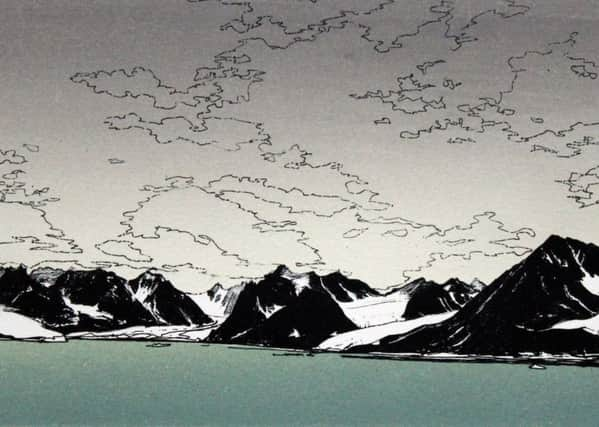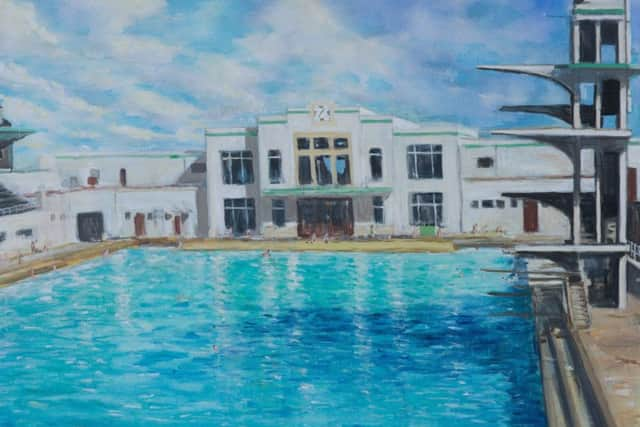Art reviews: Frances Walker | Henry Kondracki | David Martin


Frances Walker: So Far..., Peacock Visual Art, Aberdeen *****
Henry Kondracki: Water, Light and Air, Open Eye Gallery, Edinburgh ****
Advertisement
Hide AdDavid Martin: Shifting Patterns: Travels in West Africa, Open Eye Gallery, Edinburgh ***


In 1974 Frances Walker was a founder member of Peacock Printmakers (now inexplicably renamed Peacock Visual Arts) and she has been a principal pillar of the organisation ever since, growing as a printmaker herself in symbiosis with the organisation. Working closely with its skilled printmakers, in recent years especially with master printmaker Michael Waight, she has become truly outstanding in the field. She is now the doyen of Scottish art, but her show at Peacock demonstrates that her work is still evolving, although of course she is a distinguished painter and not just a printmaker. The National Gallery recently acquired a painting by her. It was a little tardy, but characteristically she responded with a generous gift of prints.
The title of the present show, Frances Walker: So Far... is ambiguous. With the stress on the second word, it expresses admiration that she has done so much. With the stress on the first, it suggests she is still on a journey. It is surely the latter, for she is certainly not resting on her achievement, remarkable though it is. The works in the show all date from the last eight years and include etchings, screen prints and lithographs. Several also combine techniques in original and inventive ways. Wild Shore, for instance, is a large etching that however also includes screen print. A characteristic composition, it is a view across a rocky shoreline to the sea with a high horizon beyond. The foreground is grass and from its edge a cleft cuts through the rocks to the sea. At its nearest point, a rock pool catches the light and, in a tiny touch of colour added with screen print, the rusty iron poles of a fence march down to the edge of this pool. The quality of the etched line is really vivid. The original image was apparently drawn with a quill pen and the rich and fluid quality of its line has somehow been transferred to the etching.
Wild Shore is a characteristic image and similar rocky shorelines feature frequently in her work. Here Achmelvich and Shore Pool are two more examples. In her hands, however, the rocks are not just inert, but geology understood as the living bones of the planet: as James Hutton recognised long ago, witnesses to the enormous dynamics that have shaped our world.
A few years ago, Frances Walker travelled to the Antarctic. Several works here are memories of that voyage. Refuge Hut, for instance, combines screen print with lithography in an image of a hut on the Antarctic shore. Bright red and angular, the hut is an awkward and alien presence sitting starkly against a background of rocks and ice. Penguins stroll past indifferent to its intrusion. The screen print triptych Antarctic Shore Walk is another striking example of this exotic subject matter. Closer to home, Ferry Crossing is a view of the Sound of Sleat. Very beautiful, it is a simple screen print, or it professes to be. Screen print is generally a medium of simple surfaces. It can look flat beside the implicit relief of etching, but here in a truly original way she has made it into a quite different medium. It has a texture like an oil painting, the result of the application, not just of three, four, or even half a dozen colours which might be regarded as normal, but of 50.
Tiree Window, one of the most recent prints here, is the view from the artist’s house on Tiree: a proper Tiree cottage with wide walls, a turf roof and tiny windows. In the print, the composition is framed by the square window embrasure. There is a still life on the wide sill in the foreground and through the window a glimpse of sheep grazing on the machar outside. The print is etching with aquatint, but with one tiny spot of colour, a blue farmer’s mark on a sheep visible through the window. In its strength and density this print is really outstanding.
Advertisement
Hide AdAn earlier great printmaker, William Blake, wrote about “the hard and wiry line of rectitude” in drawing, suggesting that there is a direct analogy between good drawing, and indeed etching, and personal integrity. That we certainly see in Frances Walker. Her dedication to her art, the depth of her engagement with it and the way she shares it with us, all speak of the profound integrity which is also patently visible in her art. Blake also described the acid of etching burning lines into copper plate as akin to the fire of the imagination burning its way through the disorder of experience to find order lying within. He would certainly have seen all that in prints like these.
Frances Walker is an artist of the higher latitudes. An etching of London here is a rarity in her work, the result of a commission from the House of Commons. Otherwise the rule is Scotland and northwards, or if she must go south, then it’s all the way to the Antarctic with nothing in between. You could say that Henry Kondracki, currently showing at the Open Eye, is rather similar. Indeed, although he does also range more widely, he has become the painter-poet of Edinburgh par excellence. His painting is unpretentious, but sincere and wholly convincing. It is in keeping that his pictures are often small, but they are no less eloquent for that. His choice of Edinburgh subjects is also mostly untypical of the grand views that have hitherto been the principal painterly record of the city. Small pictures of the corner of Leith Walk, titled Dofos (the local pet shop), for instance, of a police box on a corner in the snow, or of Ramsay Garden catching the afternoon sun, are characteristic subjects. Here though he has also worked on a larger scale to invoke predecessors like Alexander Nasmyth and many others with a very fine, and for him very big, picture of Edinburgh Castle glowing pink in the evening sun.
Advertisement
Hide AdAlso showing at the Open Eye, David Martin’s recent work is quite different in subject from either of the foregoing. He has recently been to West Africa and has recorded his experiences in a series of collages, several of them very large. The result is colourful and certainly suggests the energy and bustle of the places he has visited, though I do hope that the use of obviously recycled material in his collages is not intended as a comment on the make-do-and-mend culture which in West Africa is a necessity, not a choice.
Frances Walker until 3 November; Henry Kondracki and David Martin until 29 December